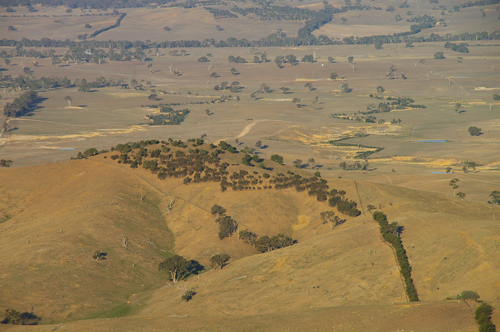Agility, flexibility and reality in future climate change planning
In recent months Natural Decisions has been working with a number of Victorian CMAs; East Gippsland, North Central and West Gippsland, to assist with their development of regional climate change adaptation and mitigation plans.
A fascinating aspect of this work has been applying what is known as an ‘Adaptation Pathways’ approach. Given the uncertainty around the climate and other socio-economic variables in the future, keeping as many management options open as possible is vital. The concept of ‘adaptation pathways’ is one approach to deal with the uncertainty of planning for climate change. However, the concept is still in its early stages of development and there has been little practical application in NRM planning in Australia. Overseas the approach has been largely applied in human settlement, health and infrastructure contexts.
A working definition developed by the Southern Slopes Climate Change Adaptation Research Partnership (SCARP) is given as “A pathway approach allows us to move forward in the face of uncertainty by considering a range of adaptation actions and sequences as new information and data become available”. SCARP’s pathways planning approach accords with recognised principles for adaptation: Consider multiple possible futures; plan to learn; be explicit about values and knowledge; and action does not require complete knowledge or consensus.
The adaptation pathways approach enables decision makers to consider a range of possible management actions and how they will perform under a range of potential futures. The approach is shaped by the consideration of thresholds and tipping points of certain outcomes and management options. Thereby considering if and when a management option might be cease to be effective, and what might be the tell-tale signs of the threshold or tipping point being approached or exceeded.
In our work with the CMAs we have applied and adapted the approach to a range of issues, including: habitat connectivity planning, floodplain management for carbon and biodiversity outcomes, water resource management and sustainable grazing systems. In doing so we have also considered issues of feasibility, risk, adoption and cost, to evaluate the usefulness of different adaptation options. The matter of tipping points and thresholds has been challenging – while these are appealing and often useful concepts, the ability to establish them in practice for complex systems can be difficult, often impossible. In these cases it is best to stick within the bounds of what can reasonably be predicted to inform planning.
We have been grateful for assistance from members of SCARP (esp. Karyn Bosomworth from RMIT) and Victorian CMA staff (esp. Rex Candy at EGCMA and Rohan Hogan at NCCMA) in this work. We would also like to acknowledge the contribution of Mal Brown (Scarlet Consulting) who has worked with us in the North Central CMA.
The regional climate change plans, funded by the Australian Government, will be appearing for public consultation over coming months. Please contact us if you would like to learn more about this useful and pragmatic approach to climate change and NRM planning.

The view from Ben More in central Victoria, at the top of both the Loddon and Avoca catchments. What adaptation pathways are worth examining in this landscape under a drier, hotter and more variable future climate?
Posted 21 March 2015 in News



















